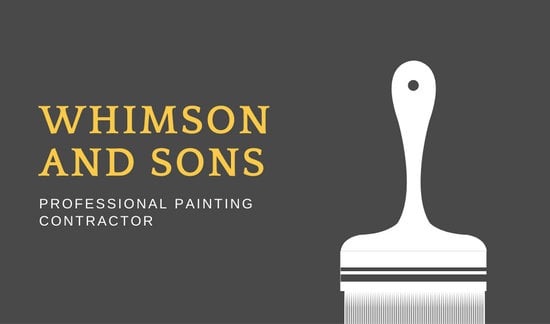Understanding Seasonal Influences On Commercial Exterior Paint: Vital Knowledge For Success
Understanding Seasonal Influences On Commercial Exterior Paint: Vital Knowledge For Success
Blog Article
Written By-Burnham Whalen
When you're planning a business outside paint job, seasonal factors can make or damage your outcomes. You'll wish to consider how temperature level and humidity impact paint application and drying times. Choosing the best season can ensure your paint sticks effectively and lasts much longer. However which periods are absolutely the most effective for this sort of work? Let's explore the crucial elements that can affect your task's success.
The Influence of Temperature on Paint Application
When you're preparing a business external painting job, the temperature can considerably impact how well the paint sticks and dries out.
Preferably, you wish to repaint when temperature levels range between 50 ° F and 85 ° F. If it's as well cool, the paint might not treat effectively, leading to problems like peeling off or fracturing.
On the flip side, if it's also warm, the paint can dry as well swiftly, stopping appropriate bond and leading to an irregular surface.
You need to additionally take into consideration the time of day; morning or late afternoon supplies cooler temperatures, which can be extra favorable.
Always examine the manufacturer's suggestions for the certain paint you're utilizing, as they usually supply support on the perfect temperature level variety for ideal outcomes.
Humidity and Its Impact on Drying Times
Temperature isn't the only environmental variable that influences your business outside paint project; humidity plays a substantial role as well. High humidity levels can slow down drying out times considerably, influencing the overall top quality of your paint job.
When the air is saturated with wetness, the paint takes longer to cure, which can lead to concerns like poor bond and a higher risk of mold growth. If you're painting on an especially humid day, be gotten ready for extensive delay times between coats.
It's important to check neighborhood weather and strategy appropriately. Preferably, go for moisture levels in between 40% and 70% for optimal drying out.
Maintaining these factors in mind guarantees your job stays on track and provides an enduring surface.
Best Seasons for Commercial Outside Painting Projects
What's the best time of year for your industrial outside paint tasks?
Spring and very early autumn are normally your best bets. During these periods, temperature levels are mild, and humidity degrees are typically lower, creating optimal problems for paint application and drying.
Stay clear of summertime's intense heat, which can trigger paint to completely dry too promptly, leading to bad bond and surface. In a similar way, winter season's chilly temperatures can prevent appropriate drying out and treating, taking the chance of the durability of your paint job.
check out this site for days with temperature levels between 50 ° F and 85 ° F for ideal results. Remember to inspect the local weather report for rainfall, as wet conditions can spoil your project.
Planning around these elements ensures your painting task runs smoothly and lasts longer.
Conclusion
In conclusion, preparing your business exterior painting projects around seasonal considerations can make a substantial distinction in the outcome. By scheduling job during the perfect temperatures and humidity degrees, you'll make certain far better bond and drying times. Bear in mind to keep an eye on local weather prediction and select the right time of year-- springtime and very early loss are your best choices. Taking get more info will certainly assist you achieve a sturdy and professional finish that lasts.
